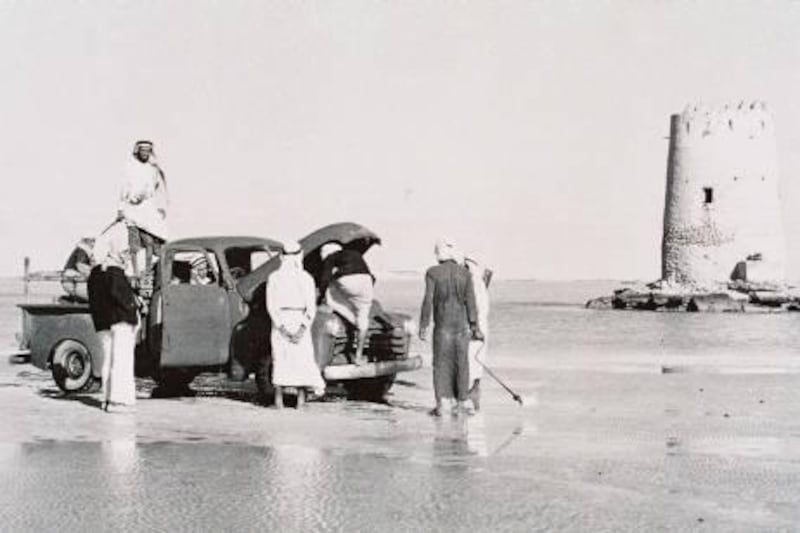ABU DHABI // When Ahmed al Amiri first joined his father on driving trips to Dubai in the late 1970s, their car would frequently cross paths with something that today would be a little unexpected on the E11 motorway - a camel.
"The trick to getting a camel to leave is to not force it to move," he said. "If you do, you will only aggravate it, and it could even retaliate. Just wait and it will leave on its own."
The long and windings trips would often worry Mr al Amiri's mother. The road was poorly lit and the journey challenging. However, for Mr al Amiri, now 38, the driving expeditions offered quality time with his father and the chance of adventure.
More than three decades later, the motorway has changed to keep pace with the country's growth, and what once was little more than a dusty two-lane track is now an eight-lane artery connecting the nation's two main cities.
Now officials from the Department of Transport (DoT) are planning to build a second Abu Dhabi-Dubai highway, with work to begin by 2015.
The project, part of Abu Dhabi's Surface Transport Master Plan, involves construction of a four-lane carriageway to reduce congestion on the existing road.
The original E11 was proposed on January 22, 1968, after a meeting between Sheikh Zayed, the father of the UAE, and Sheikh Rashid bin Maktoum, then the ruler of Dubai. Sheikh Zayed decided to pave a road between Abu Dhabi and Dubai.
Work on the Dh15 million project - equivalent to Dh60 million today, according to government officials - began in 1971 and was completed by 1980.
Drivers travelling on the original road had to rely on their lights and quick instincts to avoid accidents. And even then, poor visibility was a common problem.
Mohammed al Hudurmi, 53, was 10 years old when the Abu Dhabi-Dubai road was completed. But his memories of journeys along the motorway remain vivid. Speed bumps made of asphalt and covered in sand were frequent and difficult to see, he said.
"The road was long and narrow, and there were no hard shoulders to resort to in times of emergency," Mr al Hudurmi said.
Small cafeterias and restaurant shacks often lined the road, but they were dangerously close to traffic.
"People would be speeding down the road and suddenly come across a speed bump. Since the road was very narrow, this would often lead to accidents," he said. The road was also heavily used by lorries, which posed a threat to smaller cars.
"Large trucks often travelled along the right lane, which was filled with pits and ditches, and was congested."
Conditions were particularly dangerous during wet weather when the water would pool and vehicles struggled to stay on the road.
Checkpoints and time-consuming entry procedures were another hurdle for commuters as they left one emirate and entered the other, Mr al Hudurmi said.
"Before the union, Seih al Shueib was the borderline between the two emirates and you would have to get your passport stamped before you entered," he said.
The trip from Abu Dhabi island to where the Burj Khalifa is now would take the family a little over two hours in their Renault, Mr al Hudurmi said - provided there were no accidents that could result in major delays.
However, the surfacing of the Abu Dhabi-Dubai roadway was a historic event that changed the face of road transport in the UAE.
In the late 1950s, before the road was developed, residents travelled in convoy, using camels and carriages to transport their goods, with the journey taking up to seven days. Specially modified pickup trucks owned by the British, who occupied the UAE at the time, were also used to cross the desert train and would take about seven hours to reach Dubai.
In 1993, a Dh50,000 project to expand the road to four lanes began. Eight exit bridges leading to various destinations in the two emirates were also built at a cost of Dh110 million.
Today, the road forms the main artery between the two emirates, allowing commuters to travel from the border of Abu Dhabi to the border of Dubai in one hour.
Mr al Hudurmi, who has witnessed the transformation of the road in the past 30 years, said the change had been remarkable.
"There's a huge difference," he said. "Before we had no regulations, and now we follow international standards. But there is always room for improvement."






